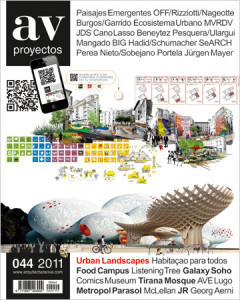Torribera Food Campus. Central University of Barcelona+
2010-
Barcelona-Santa Coloma de Gramanet, Spain
From an urban viewpoint, the proposal’s aim is to accentuate those features of the premises that most define it, and from such an angle we understand that the north-south axis becomes a scheme to reinforce in order to maintain the urban and public character of this first part of the axis. The proposal wishes to minimize the construction’s impact within the area, so it concentrates the actual building mass on a specific area.
The pieces in a linear arrangement incorporate a new industrialized system that brings together a series of advantages: speed of assembly, dry construction all the way, flexibility for future alterations, significant cost reduction.
The system involves a change in the way a project is executed, using the philosophy of the assembly chain and concentrating work in the production areas. The system is based on prismatic structures with 12 x 2.5 meter floor areas and rising 3 meters. Both the floor and the ceiling of each module are formed by 1.5 mm thick corrugated metal sheets, which work on a structural level, with metal props at the corners.
Santa Coloma de Gramanet, Barcelona, España

